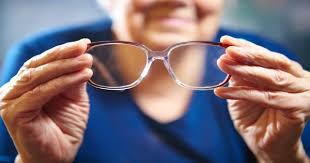Read Our Blog

Can Macular Degeneration Be Prevented
- posted: Sep. 25, 2020
Macular degeneration is the deterioration of the macula, which is the small central area of the retina of the eye that controls visual acuity. While medical experts cannot definitively pinpoint a specific cause, there are several known risk factors.
Leading the list is age, which is why the disease is sometimes called age-related macular degeneration or ARMD. Other factors can include smoking, poor diet, high blood pressure, heredity, and even eye color. With the aging of America, macular degeneration has now become the leading cause of vision loss and is projected to impact nearly 18 million Americans by 2050.
There are two main types of macular degeneration: wet and dry. Dry macular degeneration is the more common and early form of the disease, as a result of aging and the thinning of the macular tissues. There are no FDA-approved treatments for dry AMD, however, many clinical trials are in the works.
Approximately ten percent of dry AMD cases turn into wet AMD, which is the form that typically leads to irreversible vision loss. Wet AMD is when new blood vessels develop under the retina, leaking blood and fluid, causing permanent damage to light-sensitive retinal cells.
Those with early-stage AMD may notice a slow, painless loss of vision, which is often overlooked especially in older adults, as they attribute it to the aging process. Some other early signs include shadowy areas in your central vision or unusually fuzzy or distorted vision. In rare instances, vision loss can be sudden.
Initial signs of macular degeneration can be identified even before symptoms occur through a routine retinal exam. Your eye care practitioner may suggest using the Amsler grid to measure your central vision if he or she detects vision degradation.
While you may not be able to completely prevent age-related macular degeneration, regular eye exams can help identify the disease from the onset. If you’re experiencing any of the symptoms of AMD, see your eye care professional today.
Originally published on February 3, 2020 by Kristine Heslin on LinkedIn

Can Macular Degeneration Be Prevented
- posted: Sep. 25, 2020
Macular degeneration is the deterioration of the macula, which is the small central area of the retina of the eye that controls visual acuity. While medical experts cannot definitively pinpoint a specific cause, there are several known risk factors.
Leading the list is age, which is why the disease is sometimes called age-related macular degeneration or ARMD. Other factors can include smoking, poor diet, high blood pressure, heredity, and even eye color. With the aging of America, macular degeneration has now become the leading cause of vision loss and is projected to impact nearly 18 million Americans by 2050.
There are two main types of macular degeneration: wet and dry. Dry macular degeneration is the more common and early form of the disease, as a result of aging and the thinning of the macular tissues. There are no FDA-approved treatments for dry AMD, however, many clinical trials are in the works.
Approximately ten percent of dry AMD cases turn into wet AMD, which is the form that typically leads to irreversible vision loss. Wet AMD is when new blood vessels develop under the retina, leaking blood and fluid, causing permanent damage to light-sensitive retinal cells.
Those with early-stage AMD may notice a slow, painless loss of vision, which is often overlooked especially in older adults, as they attribute it to the aging process. Some other early signs include shadowy areas in your central vision or unusually fuzzy or distorted vision. In rare instances, vision loss can be sudden.
Initial signs of macular degeneration can be identified even before symptoms occur through a routine retinal exam. Your eye care practitioner may suggest using the Amsler grid to measure your central vision if he or she detects vision degradation.
While you may not be able to completely prevent age-related macular degeneration, regular eye exams can help identify the disease from the onset. If you’re experiencing any of the symptoms of AMD, see your eye care professional today.
Originally published on February 3, 2020 by Kristine Heslin on LinkedIn
Locations
Office & Optical Hours
Office Hours
Monday, Tuesday, Friday
9:00 am - 5:30 pm
Wednesday, Saturday
8:30 am - 3:00 pm
Thursday
9:00 am - 7:00 pm
Sunday
Closed
Optical Hours
Monday, Tuesday, Friday
9:00 am - 4:30 pm
Wednesday, Saturday
8:30 am - 2:00 pm
Thursday
9:00 am - 6:00 pm
Sunday
Closed


